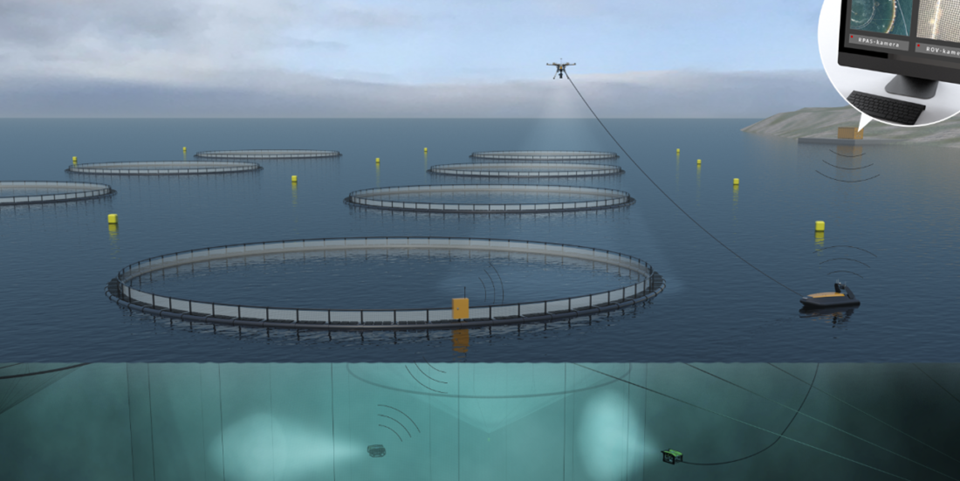Currently, service vessels with several crew on board are used to carry out day-to-day tasks on fish farm facilities. Such tasks include everything from fish welfare monitoring to facility inspections, control of feed rationing and lice counting.
These operations may become more demanding in the future now that we know that the industry is planning to locate facilities in more open waters where weather and sea conditions are harsher. This is why researchers are working to assemble a team of robots that can do these jobs.
Full control around the clock
“There are many advantages to using so-called autonomous and remotely operated systems”, says Per Rundtop, a researcher at SINTEF Ocean. “They require less resources, inspections can be carried out around the clock, and the safety of personnel ceases to be a problem”, he says.
This is music to the ears of a sector facing tough safety-related challenges.
Researchers from SINTEF and NTNU, together with developers from companies including Maritime Robotics, Argus Remote Systems and Lerow, are currently working together to enable robotic systems to implement tasks currently carried out by people. The project is called ARTIFEX.
“We have developed a great deal of new technology already”, says Eirik Evjen Hovstein, COO at Maritime Robotics. “Everything from autonomous vessels, drones and Remotely Operated Vehicles (ROVs) that can carry out tasks such as inspections and underwater maintenance. The challenge is to get these technologies working well together”, he says.
Full-scale tests on Frøya

ROV: this ROV is being trained to inspect net pens below the water surface. Photo SINTEF
Early next year, the technology will be tested at SINTEF ACE’s full-scale laboratory on the island of Frøya. The plan is to get an autonomous vessel to transport an ROV and a drone out to the facility.
“Once at the facility, the vessel will act as a landing platform and base station for the drone, and a launch pad for the ROV. It will also perform tasks by interacting with the ROV”, says Rundtop.
“It’ll be something like a Kinder egg”, he says. “Three vehicles in one!”, adds Evjen Hovstein.
Robots working together
There will be four aspects to the research work involved in the ARTIFEX project – vehicle design, autonomous systems, and airborne and underwater operations.
“For example, the drone will monitor the fish feeding process, while the ROV carries out underwater inspections and tasks such as repair of damage to the nets to ensure that holes do not become large enough to allow fish to escape”, says Hovstein. “All these operations can be monitored and operated by a single person located on shore. “I wouldn’t be surprised if many young people find this job attractive. It’s almost like playing a computer game, except that here they would be doing something really useful”, he says with a smile.
Half of the funding for the innovation project ARTIFEX is being provided by the Research Council of Norway, and half by the industry. The project was launched in 2016 and will be completed during 2018. It has a budget of NOK 18 million.

